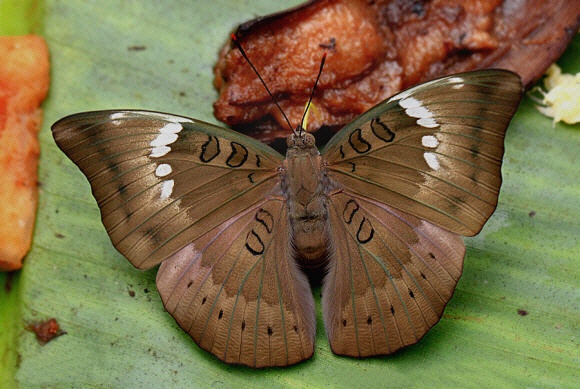
Introduction
There are about 55 species in the genus Euthalia, divided into several sub-groups with differing adult characteristics.
Euthalia aconthea is the “type” species of the aconthea group, all members of which are sexually dimorphic. The males of several species in this group e.g. ipona and mahedeva, have broad bands of metallic blue or green on the outer hindwings, although aconthea itself is an exception to this generalisation. Females in the aconthea group are larger, paler, and in some species are beautifully patterned with greyish steaks and chevrons. Again, aconthea itself is an exception, being similar in pattern to the male, but with a lighter, warmer ground colour.
Euthalia aconthea is distributed from India and Sri Lanka to Thailand, Malaysia, south China and the Philippines. It is also found in Sumatra, Borneo, Java, Bali and Lombok.
Habitats
This is a lowland species found in rainforest habitats. It can also be found in gardens and orchards where its food plants are grown.
Lifecycle
The larval food plants include mango Mangifera and cashew Anacardium (Anacardiaceae); and also Scurrula (Loranthaceae).
Adult behaviour
Males visit damp patches to imbibe mineralised moisture, and also attend dung, carrion and fallen fruits on the forest floor.
Females are usually seen deep in the forest, basking on leaves in areas of dappled sunlight. The egg-laying behaviour is interesting to watch. In Taman Negara (Malaysia) I watched a female settle on a leaf, where she spent a few moments basking. She then slowly and slightly awkwardly walked backwards, edging herself to the very tip of the leaf, and while still keeping her wings fully outspread, curved her abdomen under the leaf to deposit a single egg.
